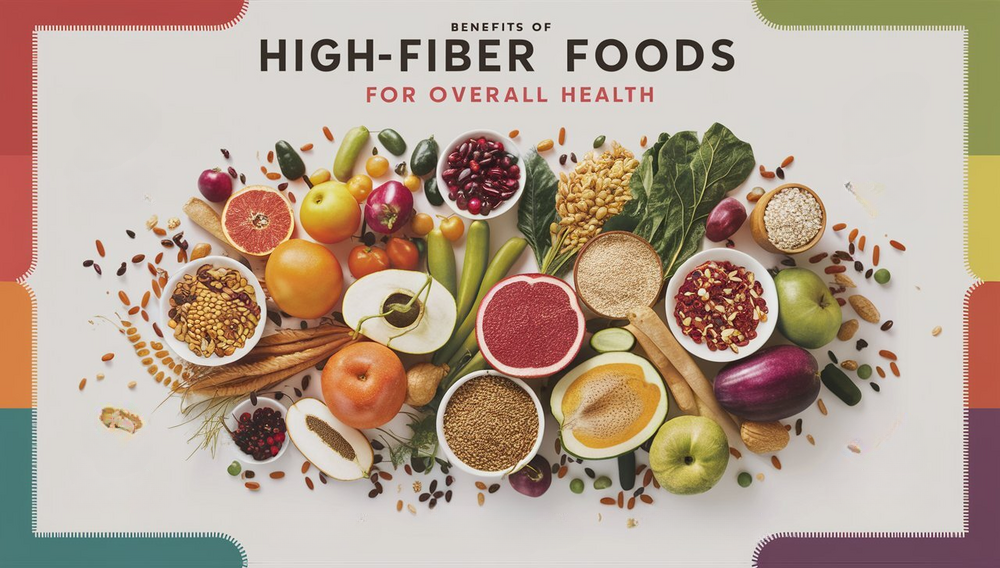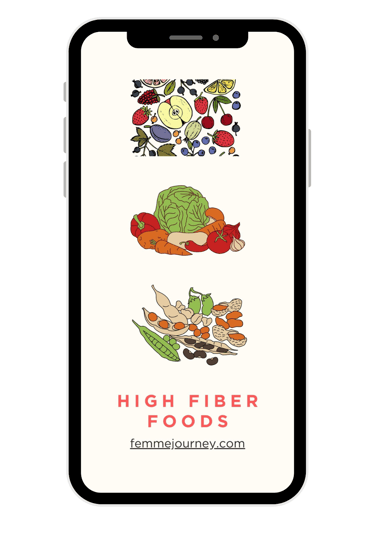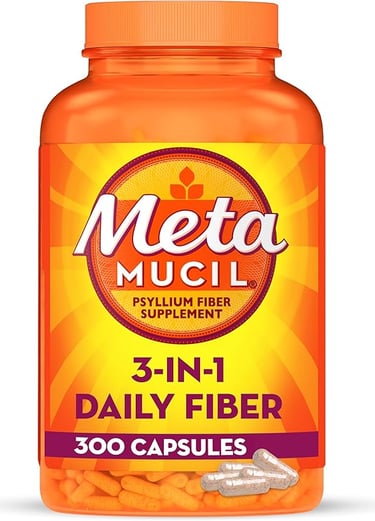Unlock Amazing Health With These High-Fiber Foods
Explore top high-fiber foods for digestion, weight loss, and heart health. Get quick tips, a downloadable shopping list, and expert answers about fiber!
Isabella Ramirez
7/11/20244 min read


Dietary fiber, often simply referred to as fiber, is a crucial component of a healthy diet that many people overlook. This indigestible part of plant foods passes through our digestive system, aiding in various bodily functions. Incorporating high-fiber foods into your diet can bring numerous health benefits, from improved digestion to reduced risk of chronic diseases.
What is Dietary Fiber?
Dietary fiber is the part of plant foods that our bodies cannot digest or absorb. Unlike other food components, such as fats, proteins, or carbohydrates, which our body breaks down and absorbs, fiber passes relatively intact through our stomach, small intestine, and colon, eventually exiting the body.
There are two types of dietary fiber:
Soluble Fiber: Dissolves in water to form a gel-like material. It can help lower blood cholesterol and glucose levels. Sources include oats, peas, beans, apples, citrus fruits, carrots, barley, and psyllium.
Insoluble Fiber: Promotes the movement of material through your digestive system and increases stool bulk. Good sources include whole-wheat flour, wheat bran, nuts, beans, and vegetables, such as cauliflower, green beans, and potatoes.
Health Benefits of High-Fiber Foods
Digestive Health: Fiber adds bulk to the stool and helps it pass more easily, which can prevent constipation and promote regularity.
Weight Management: High-fiber foods are more filling than low-fiber foods, helping you feel full longer and potentially reducing your overall calorie intake.
Blood Sugar Control: Soluble fiber can slow the absorption of sugar, helping to improve blood sugar levels.
Heart Health: A high-fiber diet can help lower cholesterol levels and may reduce the risk of heart disease.
Lowering Cholesterol Levels: Soluble fiber can reduce the absorption of cholesterol into the bloodstream.
Top High-Fiber Foods
Fruits: Apples (with skin), pears (with skin), raspberries, blackberries, avocados, bananas, oranges, figs, mangos, kiwi, strawberries, blueberries, plums (with skin), papaya, pomegranate seeds, guava.
Vegetables: Broccoli, carrots, Brussels sprouts, green peas, sweet potatoes (with skin), beets, artichokes, spinach, kale, collard greens, cauliflower, Swiss chard, turnip greens, bell peppers, corn, eggplant (with skin), okra, asparagus.
Legumes: Lentils, black beans, kidney beans, chickpeas, split peas, lima beans, pinto beans, navy beans, soybeans, mung beans, black-eyed peas.
Whole Grains: Oats, barley, quinoa, brown rice, bulgur, farro, whole wheat bread, whole grain pasta, popcorn, millet, buckwheat, spelt, amaranth, teff.
Nuts and Seeds: Chia seeds, flaxseeds, almonds, walnuts, pistachios, sunflower seeds, pumpkin seeds, sesame seeds, pecans, hazelnuts, hemp seeds.
Other: Edamame, tempeh, air-popped popcorn, psyllium husk, dark chocolate (70-85% cacao), coconut (unsweetened, shredded), bran (wheat, oat), acorn squash, butternut squash.
How to Incorporate More Fiber into Your Diet
Gradual Increase: Start by gradually adding fiber to your diet to avoid digestive discomfort.
Simple Swaps: Replace white bread with whole-grain bread, white rice with brown rice, and regular pasta with whole grain pasta.
Add Fiber to Meals: Sprinkle chia seeds or flaxseeds on yogurt, add beans to soups and salads, and snack on nuts and fresh fruits.
Hydrate: Drink plenty of water to help fiber move through your digestive system.
Potential Side Effects and Considerations
While increasing your fiber intake is beneficial, doing so too quickly can lead to digestive issues such as gas, bloating, and cramps. It's important to increase fiber gradually and drink plenty of water to help your body adjust.


Frequently Asked Questions About Fiber
1. How much fiber do I need daily?
The recommended daily intake of fiber is about 25 grams for women and 38 grams for men. However, most people only consume about half of these amounts.
2. Can I consume too much fiber?
Yes, consuming too much fiber can lead to digestive issues such as gas, bloating, and cramps. It's important to increase fiber intake gradually and drink plenty of water.
3. What are some easy ways to add more fiber to my diet?
Add fruits and vegetables to every meal.
Choose whole grains over refined grains.
Snack on nuts, seeds, and fresh fruits.
Incorporate legumes like beans and lentils into soups, salads, and casseroles.
4. Are fiber supplements effective?
Fiber supplements can help you meet your daily fiber needs, but it's best to get fiber from whole foods, which also provide essential nutrients and phytochemicals.
5. Does cooking affect the fiber content in foods?
Cooking can slightly reduce the fiber content in foods, but it generally remains a significant source. Steaming and microwaving tend to preserve more fiber compared to boiling.
6. Can fiber help with weight loss?
Yes, fiber can help with weight loss by promoting a feeling of fullness, which can reduce overall calorie intake. High-fiber foods also tend to be lower in calories.
7. Is fiber beneficial for people with diabetes?
Yes, soluble fiber can help manage blood sugar levels by slowing the absorption of sugar, which can prevent spikes in blood sugar levels.
8. Can children benefit from a high-fiber diet?
Yes, children can benefit from a high-fiber diet, which promotes healthy digestion and helps establish good eating habits early on. The recommended fiber intake for children varies by age, generally ranging from 19-31 grams per day.
Recommended daily fiber supplement:
Conclusion
Incorporating high-fiber foods into your diet is a simple and effective way to improve your overall health. From better digestive health to reduced risk of chronic diseases, the benefits of a high-fiber diet are numerous. Start by making small changes and gradually increasing your fiber intake to enjoy the full range of health benefits. Remember, a balanced diet rich in a variety of high-fiber foods is key to maintaining good health.
Supercharge Your Health with these 7 Smoothie Secrets

Empowering women to be healthy, happy, and beautiful.
Affiliate Disclosure: Some of the links on this site are affiliate links, which means that we may receive a small commission if you make a purchase through them. This is at no extra cost to you. This helps support this website and allows us to continue to create content like this.
©2025 FemmeJourney. All rights reserved.


